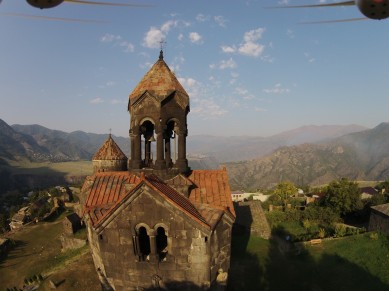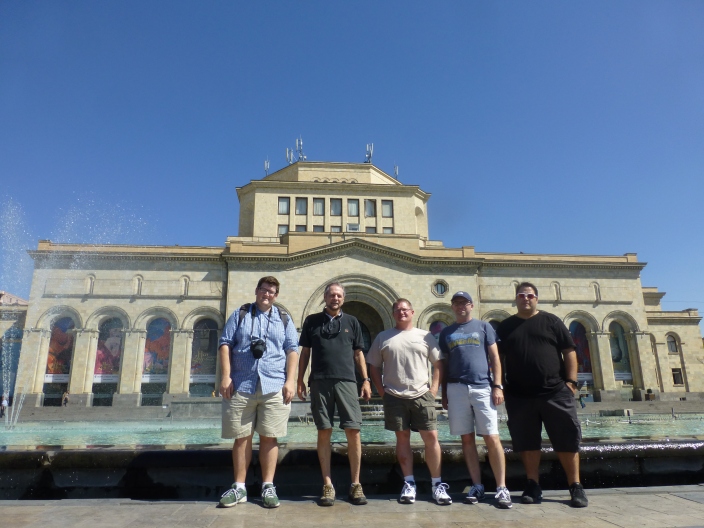October 5, 2015
Today, our last full day in Armenia, we visited the Etchmiadzin Cathedral (Էջմիածնի Մայր Տաճար) in the city of Vagharshapat. Etchmiadzin is the first cathedral constructed in Armenia, and is considered the oldest in the world. We need to differentiate here between churches, which are structures used for Christian worship, and cathedrals, which serve as the bishop’s official site and represents the central church of a diocese.
The Cathedral at Etchmiadzin is stunning for its architecture, artwork, and religious connotation. As you can see, parts of the Cathedral are enclosed in scaffolding due to a major, multi-year restoration project.
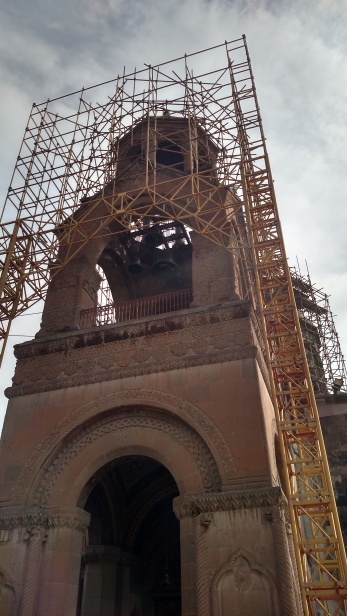
We met with Fr. Vahram Melikyan, Spokesman of the Catholicos of All Armenians and Director of Information Services for the Mother See. He lamented not knowing of our documentation methods a few years ago, before the restoration project began. He was very pleased, however, to hear about our success at Haghpat and stressed the importance of our continued collaboration and documentation of sites for future projects.

On our way back to Yerevan, we stopped at the Cathedral of Zvartnots. This site contains a number of structures that were built near the middle of the 7th century, including Zvartnots, Armenia’s main cathedral from 641 to 661 AD, and the palace of the Catholico, or head of the Armenian Apostolic Church.
Today, the Cathedral is in ruins, possibly due to an earthquake, but the remains are still impressive as the photos below demonstrate….




Jorge and I planning our next project ???
We returned to Yerevan for our final night in Armenia and, as a remembrance of our visit, we had pizza and Italian for dinner. Go figure?
The AIST team agreed that this was one of the most productive and enjoyable projects we have worked on over the past ten years, and we are looking forward to our next one here.
Bart McLeod, Jeff Du Vernay, Jorge Gonzalez, and Garrett Speed are some of the finest 3D Heritage field experts anywhere, and to have them all working on the Haghpat Monastery Complex Project is a tremendous advantage for AIST. Steven Fernandez will be a major contributor to the project when he begins to work with the data we collected back at the AIST computer and GIS labs. Lori Collins, AIST Co-Director, has been invaluable at every step of the project, and will play a key role in preparing the processed data for the website, which will hopefully be up and running in December or January.
Again, we cannot say enough about the the people of Haghpat and Armenia that we encountered who made us feel welcome, and we thank them for their support and hospitality.
Finally, I hope you all have enjoyed reading about our adventures as much as we enjoyed Armenia and the project.
Thanks.
Travis

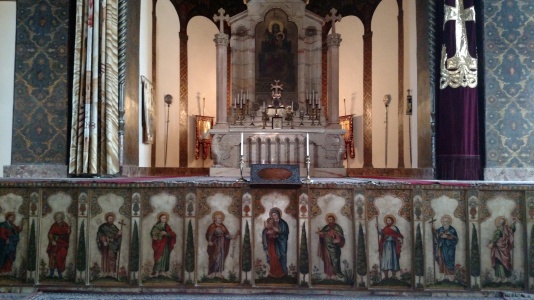


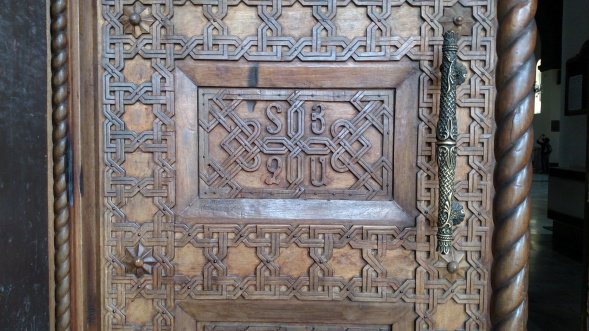



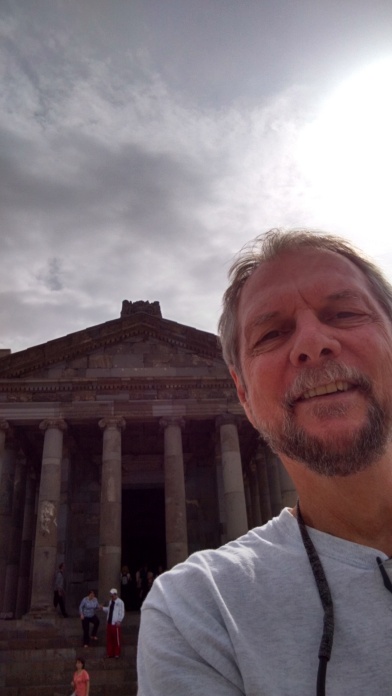

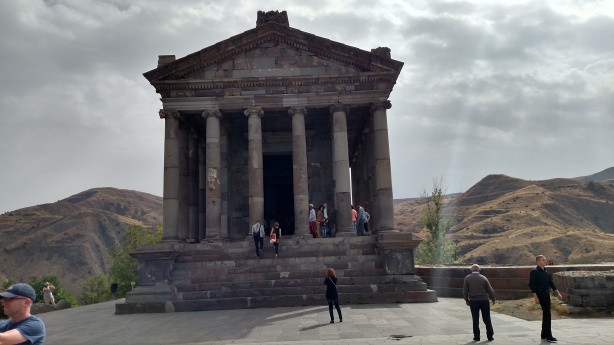
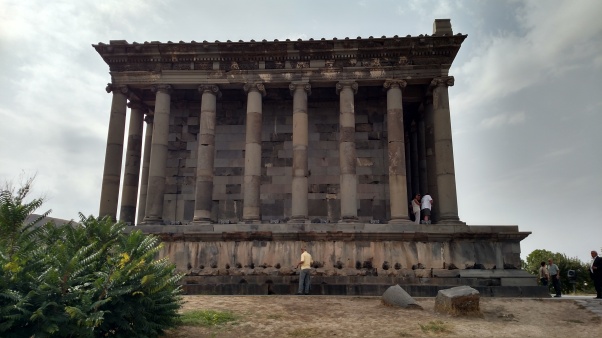



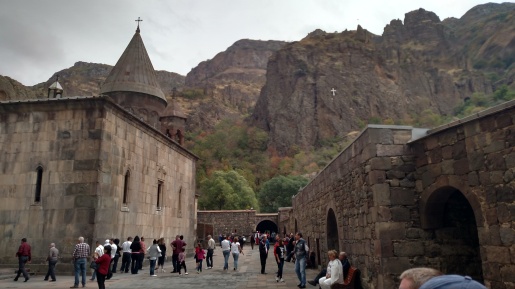
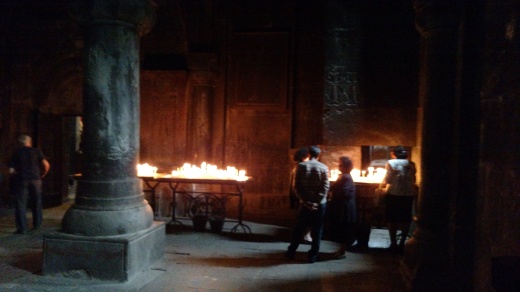

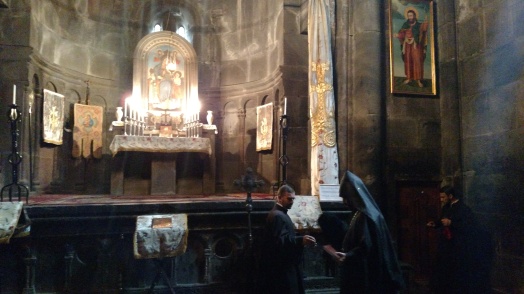
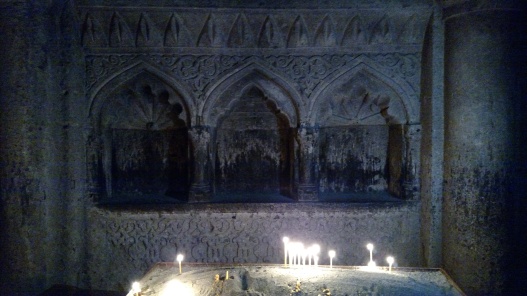
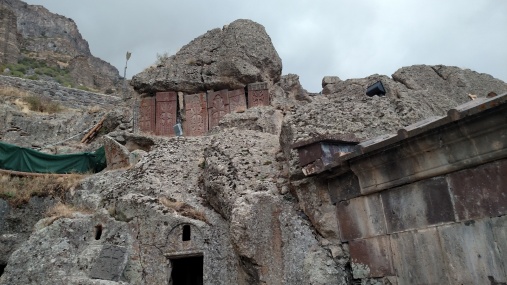












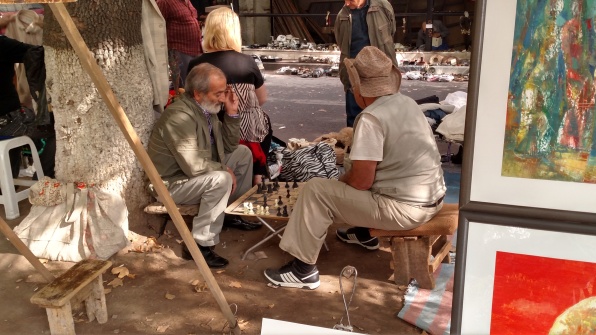
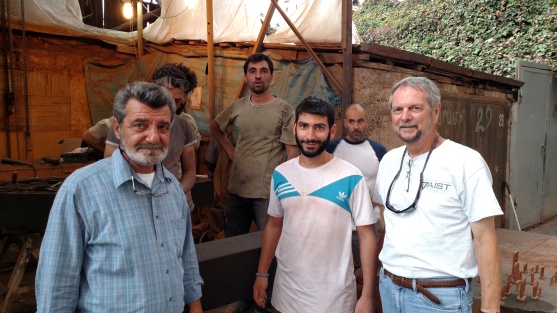
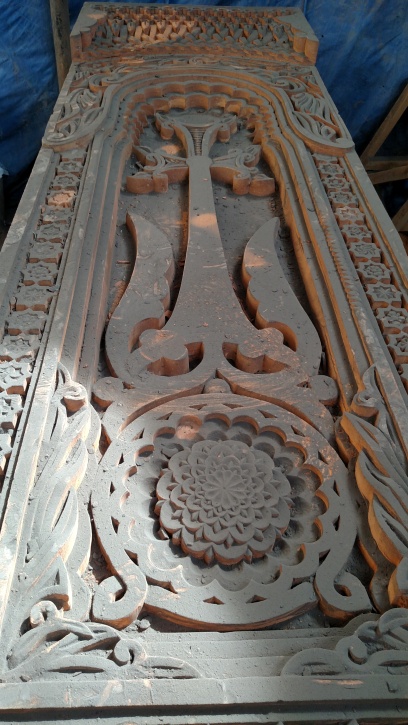


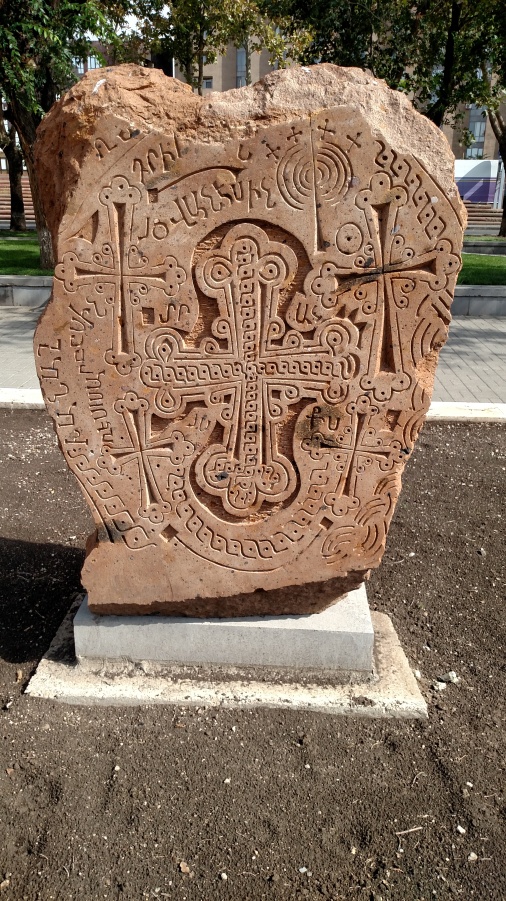


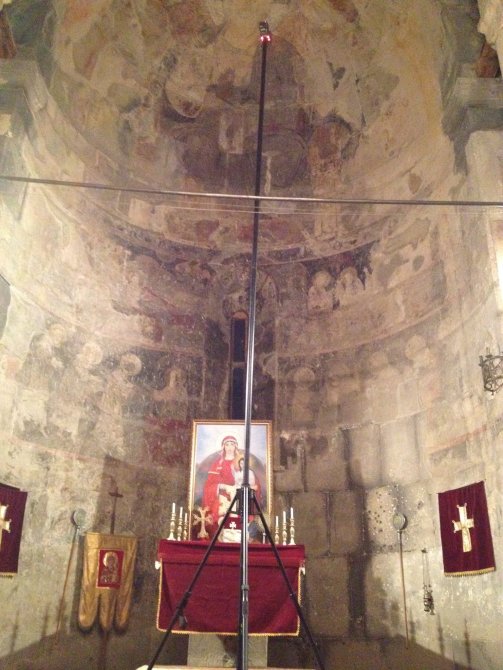

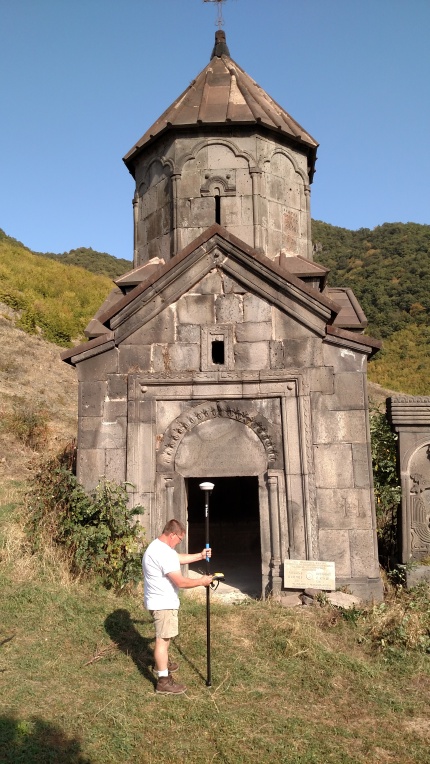

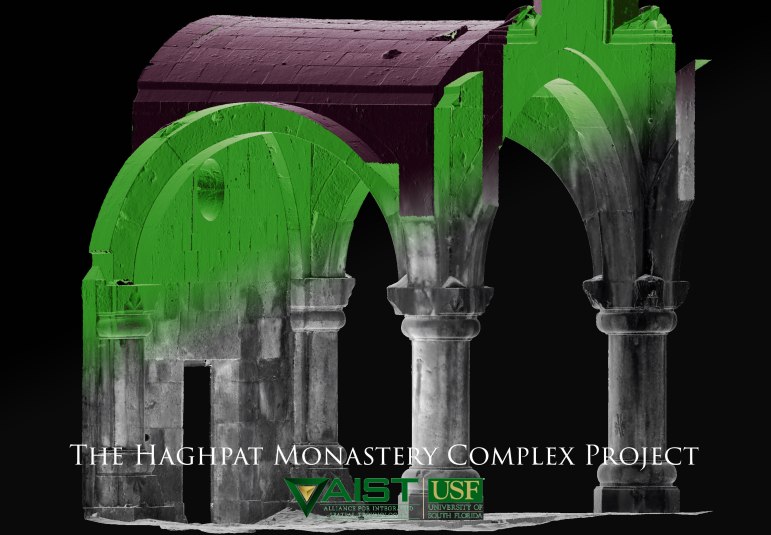









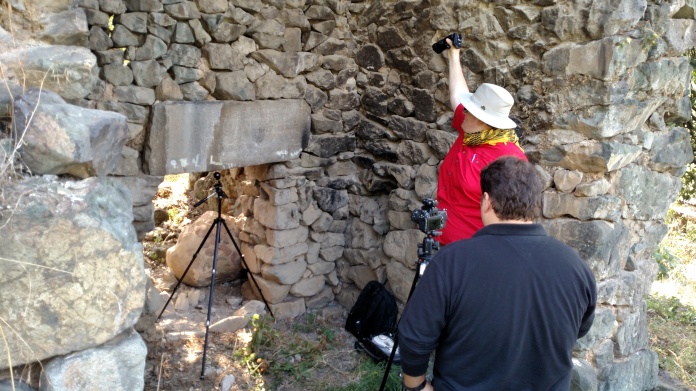






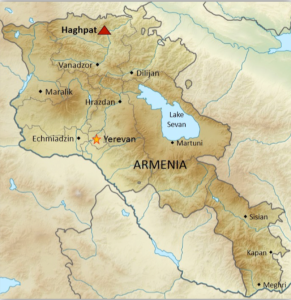

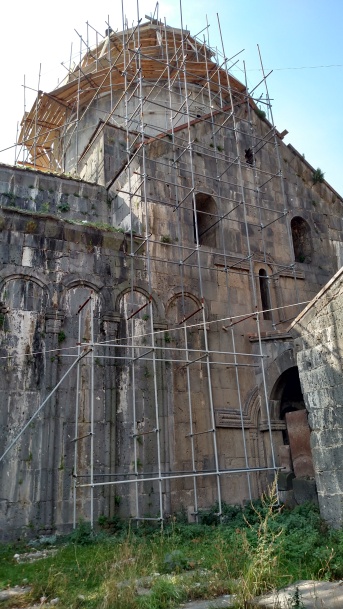

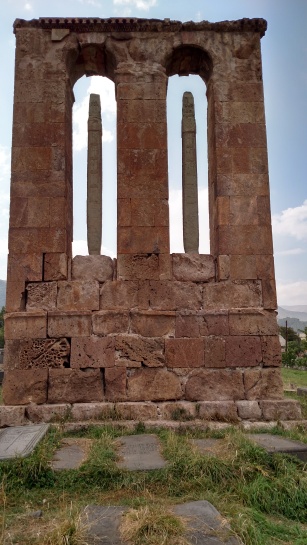


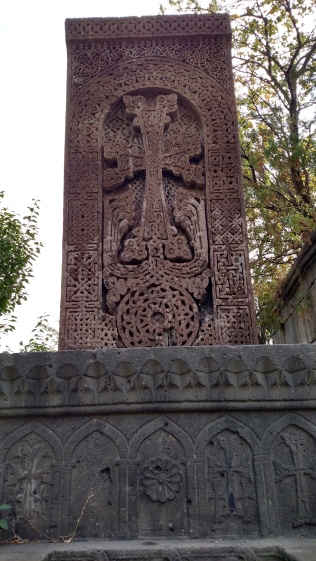




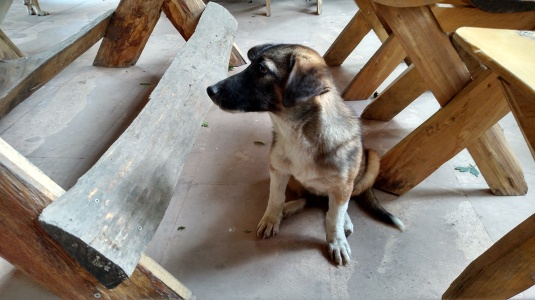


 also being utilized for photographic and videography set ups, allowing high resolution techniques to be applied to inaccessible areas of the site. Close range scan details are taken that will be merged with point cloud data from the structure. In this way, we are documenting even the finest of details and architectural features, some of which are damaged from time, weathering and events that have deteriorated their surfaces and diminished their details. The AIST team from the University of South Florida is also well equipped to document this large World Heritage complex at a variety of scales. We will use survey grade GPS to provide control for the project and to create a database of features and resource locations that will help in the management and preservation of this universally-valued treasure. Unmanned aerial vehicle platforms are allowing for newer techniques in landscape documentation such as Structure from Motion, where we will use software and mapping techniques to make 3D terrain models from 2D data such as videos. Photogrammetry techniques will also allow 3D modeling of the site terrain and structural elements.
also being utilized for photographic and videography set ups, allowing high resolution techniques to be applied to inaccessible areas of the site. Close range scan details are taken that will be merged with point cloud data from the structure. In this way, we are documenting even the finest of details and architectural features, some of which are damaged from time, weathering and events that have deteriorated their surfaces and diminished their details. The AIST team from the University of South Florida is also well equipped to document this large World Heritage complex at a variety of scales. We will use survey grade GPS to provide control for the project and to create a database of features and resource locations that will help in the management and preservation of this universally-valued treasure. Unmanned aerial vehicle platforms are allowing for newer techniques in landscape documentation such as Structure from Motion, where we will use software and mapping techniques to make 3D terrain models from 2D data such as videos. Photogrammetry techniques will also allow 3D modeling of the site terrain and structural elements. 




 ur third day at the Haghpat Monastery Complex, and we could not ask for better project conditions. The weather is great (80 degrees and no humidity), brilliant sun, and clear skies [Hope I did not just jinx us]. The people at the Gayane Hotel have gone out of their way to accommodate us. Food and drink are great, and the location perfect for our work, only a five-minute drive to the site. Perhaps we will have a video of the drive soon.
ur third day at the Haghpat Monastery Complex, and we could not ask for better project conditions. The weather is great (80 degrees and no humidity), brilliant sun, and clear skies [Hope I did not just jinx us]. The people at the Gayane Hotel have gone out of their way to accommodate us. Food and drink are great, and the location perfect for our work, only a five-minute drive to the site. Perhaps we will have a video of the drive soon.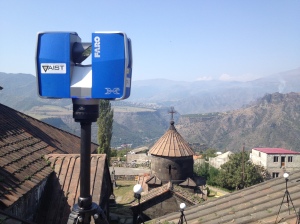 work together as a well-oiled machine. We could not ask for a better field crew.To support my assertions, I ave seen the data collected so far, and it is incredible, especially considering the conditions we have to work under. After a couple days we have figured out the daily patterns of visitors and weather. Jeff manually secured the scanner on the roof of one of the structures for a series of scans in the gusting afternoon winds. Bart, Jorge, and Garrett learned to work around the frequent groups of tourists. We have even managed to get the Priest involved and have 3D scanned him for the archive as well!
work together as a well-oiled machine. We could not ask for a better field crew.To support my assertions, I ave seen the data collected so far, and it is incredible, especially considering the conditions we have to work under. After a couple days we have figured out the daily patterns of visitors and weather. Jeff manually secured the scanner on the roof of one of the structures for a series of scans in the gusting afternoon winds. Bart, Jorge, and Garrett learned to work around the frequent groups of tourists. We have even managed to get the Priest involved and have 3D scanned him for the archive as well!![20150924_021849_Richtone(HDR)[2]](https://usfaistblog.files.wordpress.com/2015/09/20150924_021849_richtonehdr2.jpg?w=472&h=266)

